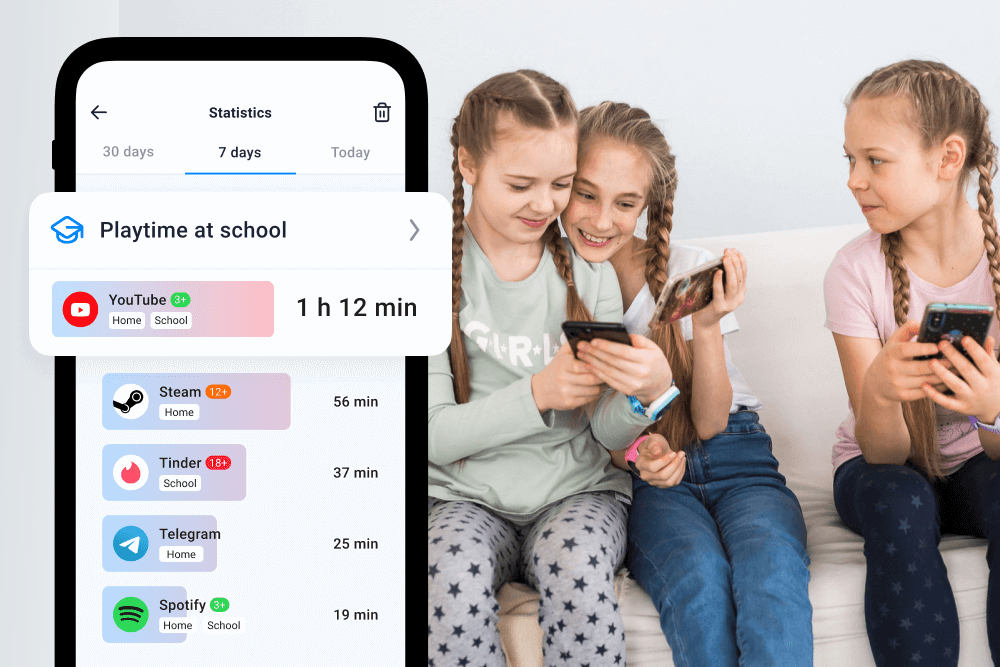Helping Kids With Homework: Tips That Actually Work

The moment the backpack hits the floor, you know it’s coming. The nightly dance of distractions, sighs, and maybe a few tears, all centered around homework. If you’re wondering how to help kids with homework without losing your sanity or doing it for them, you’ve come to the right place.
It’s a delicate balance, especially when you’re also balancing school and free time. But with the right approach, you can turn homework time from a battle into a constructive and even positive part of your child’s day.
This guide will walk you through practical, research-backed strategies to support your child, foster independence, and build skills that last a lifetime. We’ll cover everything from creating the perfect study space to navigating the common challenges that make homework feel like a chore.
Contents:
- Should Parents Help Their Child With Homework?
- Why Homework Feels Like a Struggle (for Kids and Parents)
- Setting Up the Right Environment
- Building a Homework Routine
- Study Techniques That Work
- Parental Support Without Doing the Work
- Using Technology to Support Homework
- Dealing with Common Challenges
- FAQs
Should Parents Help Their Child With Homework?

fizkes/Shutterstock
This is the big question, isn’t it? The short answer is yes, but how is what truly matters. Your goal is to be a guide, not a ghostwriter.
Research from the Department of Education shows a clear link between parental involvement and student achievement. When parents are actively engaged in their child’s education, students tend to have higher grades, better attendance, and improved social skills.
at the same time, studies have found that when parents did the homework for their children, it actually undermined their academic progress.
The key is to provide support that empowers your child. You’re there to clarify instructions, offer encouragement, and help them break down big problems. You’re not there to give them the answers. Think of yourself as a coach who helps them practice, not a teammate who plays the game for them.
Why Homework Feels Like a Struggle (for Kids and Parents)
Before you can solve the problem and instill positive homework habits, you have to understand it. Kids don’t avoid homework just to push your buttons, though it can certainly feel that way. There are usually deeper reasons for their resistance.
For example:
- Lack of Understanding: Sometimes, the material is genuinely confusing. The teacher might have moved too quickly, or a foundational concept didn’t quite click. This leads to frustration and a sense that they “can’t do it.”
- Motivation and Burnout: After a long day at school, the last thing many kids want to do is more schoolwork. Their brains are tired. They’re craving downtime, play, and a chance to recharge.
- Attention and Distractions: The modern world is a buffet of distractions. A notification on a phone, a show on TV, or even a sibling playing in the next room can feel far more appealing than complex math homework.
- Feeling Overwhelmed: A big project or a long list of assignments can feel like an unclimbable mountain, especially if there’s any overdue homework to be worried about. When a child doesn’t know where to start, their brain often chooses to do nothing at all.
Child development experts emphasize that these struggles are normal. The executive function skills needed for planning, organizing, and staying on task are still developing, especially in elementary and middle school. Your role is to provide the scaffolding they need to build these skills brick by brick.
Setting Up the Right Environment

PeopleImages/Shutterstock
You wouldn’t try to cook a gourmet meal in a messy, chaotic kitchen. Likewise, your child can’t do their best work in a distracting environment. Creating a dedicated study space is one of the most effective first steps you can take.
Here are a few more tips.
Creating A Space for Success
When you’re helping your children with schoolwork, your homework station doesn’t need to be fancy.
The most important thing is that it’s consistent. It should be a quiet, well-lit area with all the necessary supplies within arm’s reach. Think pens, pencils, paper, a calculator, and whatever else they typically need. This prevents the “I just need to find a pencil” excuse that turns into a 20-minute adventure around the house.
Consider adding a comfortable chair and a small clock. A clock helps children manage their time better and gives a subtle cue to stay focused without constant reminders. Some parents also find that a small whiteboard or bulletin board helps keep track of deadlines and homework tasks visually.
Minimizing Distractions
This is a big one. The biggest culprit is often the smartphone. The mere presence of a phone, even if it’s turned off, can reduce available cognitive capacity. The best policy is to have a “no phones during homework” rule. The same goes for the TV, tablets, and video games.
Of course, not all screen time during homework is bad. Sometimes, a computer is necessary for research or completing an assignment. In these cases, try to set up the computer in a common area where you can loosely supervise their activity to ensure they’re staying on task.
Building a Homework Routine
Consistency is your best friend, and honestly, this is one of the best homework tips for parents.
A predictable routine helps children manage their time, reduce stress, and know what to expect. It automates the decision-making process, so there’s no daily debate about when homework will happen. Getting into a routine is one of the best study skills you can instill in your child.
Here’s a sample routine you can adapt. The key is to build in time for rest and play. A child who has had a chance to decompress is much more prepared to focus.
- 3:30 PM — Arrival & Decompression: Greet them at the door. Let them have a healthy snack and 30–45 minutes of free time. This could be playing outside, reading a fun book, or just relaxing. This is their time to transition from the structure of school to the comfort of home.
- 4:15 PM — Homework Time: Head to the designated study space. Start with the most challenging subject first, while their brain is still relatively fresh.
- 5:00 PM — A Quick Break: For longer homework sessions, build in a short 5–10 minute break to stretch, get a drink of water, or do something fun.
- 5:15 PM — Finish Up: Tackle the remaining assignments. This is often a good time for tasks that require less intense focus, like studying vocabulary or finishing a drawing.
- 6:00 PM — All Done: Pack the backpack for the next day. Putting completed homework directly into the bag prevents those morning scrambles. Now, it’s time for dinner and family time, free from the stress of looming assignments.
Remember to be flexible. Some days will have more homework than others. Some kids work better in short bursts, while others prefer to power through. Adjust the routine to fit your child’s unique temperament and needs.
Study Techniques That Work

Yan Krukau/pexels.com
Helping your child “study” is more than just telling them to read their textbook. You can teach them active learning strategies that make information stick.
Elementary School
Here are some study techniques for children in elementary school:
- Make it a Game: Turn spelling words into a “word hunt” around the house. Use flashcards for math facts and make it a race against the clock. Active, playful learning is incredibly effective for this age group.
- Use Their Senses: Have them write spelling words in sand, shaving cream, or with colorful markers. The more senses they engage, the more pathways their brain creates to remember the information.
- Incorporate Short Breaks: For young children, working in 15–20 minute intervals with short breaks in between helps maintain focus and energy.
Middle School
Need help motivating kids for homework in middle school? Here are some tips:
- Active Recall: Instead of just rereading notes, have them actively recall information. Cover up the page and ask them to explain a concept in their own words. Or, have them create a “brain dump” where they write down everything they remember about a topic. This practice of retrieving information strengthens memory.
- Teach Note-Taking: Show them simple note-taking methods, like the Cornell method, where they divide a page into sections for notes, cues, and a summary. This organizes information and makes it easier to review.
- Highlight Key Information: Teach your child to underline or highlight key terms and main ideas while reading. This encourages active engagement with the material.
- Organize Study Sessions: Help them break assignments into manageable chunks and set mini-goals. Planning study sessions reduces stress and prevents procrastination.
High School
And here’s how you can provide parental support for homework struggles in high school and beyond:
- Spaced Repetition: This technique involves reviewing information at increasing intervals over time. Instead of cramming the night before a test, they should review material for a short period each day. This is one of the most powerful, evidence-backed methods for long-term retention.
- The Feynman Technique: To truly understand a concept, you must be able to explain it simply. Have your teen pretend they are teaching the topic to a younger sibling or to you. If they get stuck or use complicated jargon, that’s a sign they need to go back and review that part of the material.
- Use Practice Tests: Encourage them to take mock quizzes or practice problems. Testing knowledge actively improves retention and identifies areas needing review.
- Encourage Study Groups: When safe and appropriate, group study sessions can promote discussion, peer explanations, and motivation.
Your role is to monitor their progress without micromanaging. Check in, ask how it’s going, and glance at their work to see if they’re on the right track. This shows you’re invested but also trusts them to manage the work themselves.
Read also: How to Memorize Something Fast: Tips for Kids and Teens.
Parental Support Without Doing the Work
This is where the art of being a homework coach and providing study support for your kids comes in. Your job is to empower them to find the answers on their own, not to instill rigid homework policies that leave your child feeling frustrated.
When your child says, “I’m stuck,” resist the urge to jump in with the solution. Instead, try these techniques:
- Ask Guiding Questions: Prompt their thinking with questions like, “What have you tried so far?” or “What does the textbook say about this?” or “Can you explain the problem to me in your own words?” Often, the act of articulating the problem helps them see the solution.
- Break Down Tasks: If a project feels overwhelming, help them break it into smaller, manageable steps. Create a mini-checklist for them to follow. This teaches them project management skills and makes the task feel less daunting.
- Praise the Process, Not Just the Result: Instead of just saying “Great job on your A,” praise their effort and strategies. Say, “I was so impressed with how you stuck with that tough math problem,” or “Your notes for this chapter are so organized!” This reinforces the value of hard work and resilience.
Using Technology to Support Homework
Technology can be a powerful ally. While it’s important to limit distracting tech, you can also use it to your advantage.
For example, apps like Findmykids can offer you peace of mind, which indirectly supports the homework routine.
Let’s say your child has an after-school study group at the library. Instead of worrying about their whereabouts, you can use the app to see that they’ve arrived safely. This frees up your mental energy to focus solely on homework help when they get home.
You can also monitor their screen time on their device to make sure they are staying on task during homework hours. Using technology this way helps you stay aware of their routine and location, providing a safety net that fosters independence.
There are also many educational apps and websites that can make learning fun. From math games to virtual science labs, these tools can supplement what they’re learning in the classroom.
Dealing with Common Challenges
Even with the best routines and strategies, you’ll still face challenges. Here’s how to handle a few common ones:
- Procrastination: This is often a symptom of feeling overwhelmed or anxious. Use the “break it down” technique mentioned earlier. You can also try the “5-Minute Rule.” Have them agree to work on the task for just five minutes. Often, starting is the hardest part, and once they begin, they’ll find the motivation to continue.
- Frustration and Meltdowns: When emotions run high, learning stops. The first step is to de-escalate. Encourage them to take a break. Go for a walk, get a drink of water, or do some deep breathing exercises. Once they’re calm, you can revisit the problem with a fresh perspective.
- Learning Difficulties or Attention Challenges: If you notice a consistent pattern of struggle despite your best efforts, it might be time to talk to their teacher. They can provide insights into what they’re seeing in the classroom and may suggest specific strategies or a formal evaluation. For children with conditions like ADHD, strategies like frequent breaks, fidget tools, and breaking tasks into very small steps can be incredibly helpful.
Remember, if the struggles persist, don’t hesitate to seek extra help. A tutor can provide one-on-one attention that can make a world of difference.
Your Role as the Supportive Coach

Elena Kharichkina/Shutterstock.com
Helping your child with homework is a journey. Like any journey, there will be good days and bad days. The goal isn’t perfect grades or a conflict-free home every single night. The goal is to equip your child with the skills, confidence, and resilience they need to become an independent, lifelong learner.
By setting up a supportive homework environment, teaching them effective strategies, and being their encouraging guide, you’re doing more than just helping them get their homework done. You’re teaching them responsibility, perseverance, and how to tackle challenges on their own.
And those are lessons that will serve them long after their school days are over.
FAQs
How do you get a strong-willed child to do homework?
With a strong-willed child, it’s about collaboration and providing choices. Let them have a say in their homework routine. Ask them, “Do you want to start your homework now or after 15 minutes of free time?” or “Which subject do you want to tackle first?” Giving them a sense of control can reduce power struggles. Clearly define the non-negotiables (homework must be done before screen time, but be flexible on the smaller details.
At what age do you stop helping with homework?
There’s no magic age. Instead, your involvement should evolve with your child’s learning strategies and age. In elementary school, you’ll be more hands-on. By middle school, you should be transitioning into more of a “project manager” role, helping them organize and plan. By high school, you should primarily be a sounding board and a source of support, available if they get stuck on a difficult concept. The goal is a gradual release of responsibility.
Why do kids struggle with homework?
Kids struggle for many reasons. It could be that they don’t understand the material, they’re tired after a long school day, they’re feeling overwhelmed by the amount of work, or they’re simply distracted. Sometimes, it’s a sign of an underlying learning challenge. The first step is to observe and talk to your child to pinpoint the root cause.
How do I help my ADHD kid with homework?
Break assignments into small, manageable chunks. Use a timer to work in short, focused bursts (e.g., 15 minutes of work followed by a 5-minute break). Allow for movement; let them use a standing desk or a wiggle seat. Minimize distractions by creating a clean, quiet workspace. Celebrate small wins to keep them motivated. It’s also important to work closely with their teacher to make sure you’re using consistent strategies at home and at school.
Cover image: Evgeny Atamanenko/Shutterstock
Проверьте электронный ящик




















